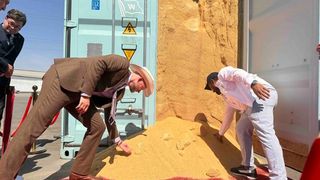New trade path for U.S. soy meal to Uzbekistan reveals need for advanced gauge-changing rail tech

Good news:
Grow your business with us
Advertise on Daryo.uzIndividual approach and exclusive materials
Ad-free site readingSubscribe
25 000 sum per month
Comments
To leave a comment, first